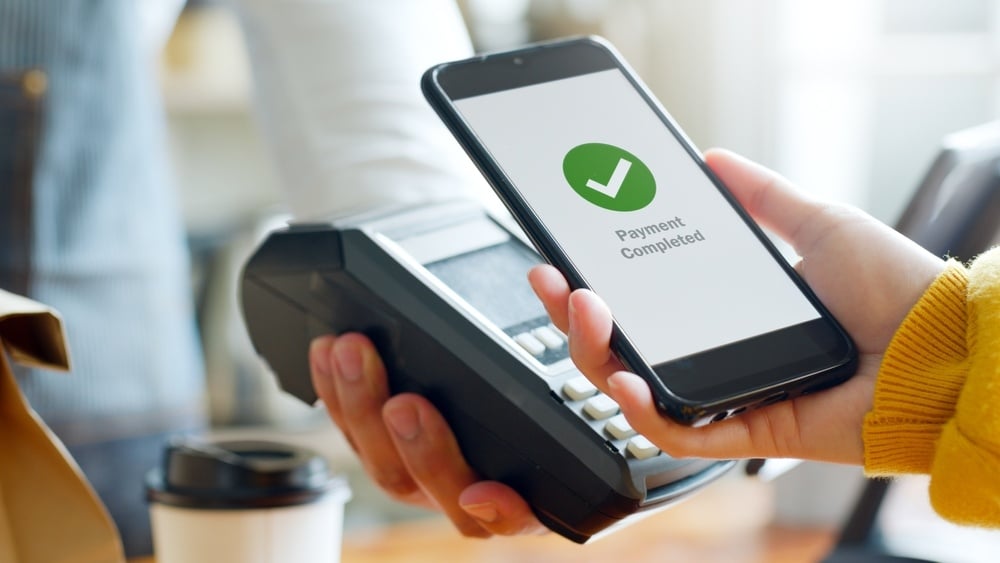
In today’s digital economy, protecting consumer data is more critical than ever. With the rise in cyberattacks and data breaches, merchants must take proactive steps to ensure the safety of their customers' sensitive information. Whether you are processing payments in person or online, securing customer data is not just about following industry best practices—it's about earning and keeping customer trust.
For businesses using merchant services, there are several key security measures that can significantly reduce the risk of a data breach. Below, we’ll explore three essential strategies: End-to-End Encryption (E@EE) and Tokenization, Compliance with PCI DSS, and Multi-Factor Authentication (MFA) with Role-Based Access Controls (RBAC). Implementing these measures can bolster your company’s defense against cyber threats and help you remain compliant with industry regulations.
End-to-End Encryption (E@EE) and Tokenization
What is End-to-End Encryption?
End-to-End Encryption (E@EE) ensures that sensitive data is encrypted from the point it’s captured (such as a card swipe or online transaction) until it reaches its destination, typically a secure payment processor. Encryption scrambles data into an unreadable format using cryptographic algorithms, making it nearly impossible for unauthorized parties to decipher the information.
With E@EE, even if cybercriminals intercept payment data during a transaction, they can’t access the actual details, such as credit card numbers or personal identification numbers (PINs). This adds a robust layer of security and is one of the most effective ways to protect consumer data during transmission.
What is Tokenization?
Tokenization is another powerful tool in data security, complementing E@EE. While encryption scrambles the data, tokenization replaces sensitive data, such as credit card numbers, with a randomly generated token that holds no exploitable value. Unlike encrypted data, which can still be decrypted, tokens cannot be converted back to the original data without access to the tokenization system.
For example, when a customer makes a purchase, their credit card number might be replaced with a token such as “4a3b6c7f.” Even if a hacker gains access to the transaction record, the token is meaningless outside of the merchant’s secure environment.
Benefits of E@EE and Tokenization:
- Reduces the risk of exposing sensitive information, even if a breach occurs.
- Lowers compliance burdens for merchants because sensitive data is not stored in its original form.
- Enhances customer trust by demonstrating a commitment to advanced data security practices.
By implementing both E@EE and tokenization, businesses can drastically reduce the risk of sensitive payment data falling into the wrong hands.
Compliance with PCI DSS: Regular Audits and Vulnerability Management
What is PCI DSS?
The Payment Card Industry Data Security Standard (PCI DSS) is a set of security standards designed to ensure that all merchants who accept, process, store, or transmit credit card information maintain a secure environment. Compliance with PCI DSS is mandatory for any business that handles credit card transactions, regardless of its size or transaction volume.
Non-compliance can result in severe financial penalties, loss of customer trust, and even the inability to process credit card transactions. Therefore, following the PCI DSS guidelines is not just a best practice—it’s a critical component of your business operations.
Key PCI DSS Requirements
To comply with PCI DSS, merchants must adhere to a variety of requirements, including:
- Maintain a Secure Network: This involves using firewalls and other advanced security tools to protect cardholder data.
- Protect Cardholder Data: Sensitive data, such as credit card numbers, must be encrypted and securely stored, or tokenized to minimize risk.
- Regular Monitoring and Testing: Businesses must regularly test their systems and monitor access to cardholder data. This helps identify vulnerabilities before they can be exploited.
- Implement Strong Access Control Measures: Limit who can access sensitive data and ensure that employees with access are properly trained in security best practices.
Conducting Regular Audits
One of the best ways to ensure that your business remains PCI DSS compliant is to conduct regular audits. Audits involve systematically reviewing your company’s security policies, processes, and technologies to identify potential weaknesses.
Steps for a successful PCI DSS audit:
- Internal audits: Conduct routine checks to ensure all systems handling payment data comply with PCI DSS standards. This includes verifying encryption practices, firewalls, and data access controls.
- Third-party audits: Hiring a certified PCI auditor can provide a more in-depth review of your security protocols. External audits offer objective assessments and are often required for certain compliance levels.
Vulnerability Management
PCI DSS also mandates that businesses have a vulnerability management program. This involves identifying and addressing security weaknesses before they can be exploited by cybercriminals. Key components of vulnerability management include:
- Patch management: Regularly update software, applications, and systems to patch known vulnerabilities.
- Penetration testing: Simulate cyberattacks to test the strength of your defenses and identify areas for improvement.
- Intrusion detection systems: Implement tools that can alert you to suspicious activity or potential breaches in real-time.
A strong vulnerability management program ensures that your security posture remains proactive, rather than reactive.
Multi-Factor Authentication (MFA) and Role-Based Access Control (RBAC)
The Importance of Multi-Factor Authentication (MFA)
Multi-Factor Authentication (MFA) adds an extra layer of protection to your payment system by requiring users to provide multiple forms of identification before accessing sensitive data. Typically, MFA combines something the user knows (like a password), something they have (like a smartphone), and something they are (such as a fingerprint or facial recognition).
For example, after entering a password, users might be prompted to enter a one-time code sent to their phone or use a fingerprint scanner. Even if a cybercriminal manages to steal a password, they’ll be unable to access your systems without the second or third factor of authentication.
Benefits of MFA:
- Significantly reduces the risk of unauthorized access to sensitive systems.
- Protects against phishing attacks, where passwords might be stolen.
- Can be applied to employees, vendors, and customers alike, ensuring that only authorized individuals can interact with sensitive data.
Role-Based Access Control (RBAC)
Another critical aspect of protecting consumer data is Role-Based Access Control (RBAC). RBAC ensures that only authorized personnel have access to sensitive information and payment systems based on their job responsibilities.
For example, while a cashier may need access to basic transaction data, they do not require full access to the customer database or payment processing system. Conversely, a manager or system administrator might need more extensive access, but it’s important to limit that access strictly to what’s necessary for their role.
By assigning specific roles and permissions, RBAC minimizes the risk of internal threats, such as data leaks from disgruntled or negligent employees, and limits the scope of damage if an account is compromised.
Implementing RBAC:
- Define roles clearly: Outline the specific data access needs for each role in your organization, ensuring that employees can only access the information they require.
- Review and adjust regularly: As roles evolve, so too should access controls. Regularly review your RBAC policies to ensure they align with current business operations.
- Monitor access logs: Use logging and monitoring tools to keep an eye on who accesses sensitive data and when. This helps detect unauthorized access attempts and trace any breaches.
As data breaches and cyber threats continue to rise, businesses cannot afford to take a passive approach to data security. End-to-End Encryption (E@EE) and tokenization, compliance with PCI DSS, and implementing Multi-Factor Authentication (MFA) and Role-Based Access Control (RBAC) are essential measures for protecting consumer data. By taking a proactive stance, businesses can not only safeguard their customers’ sensitive information but also build long-term trust and compliance with industry standards.
For merchants who want to protect their payment data and ensure smooth operations, these strategies are crucial. The time and resources invested in enhancing security measures will pay off by preventing costly breaches, avoiding fines, and building customer confidence.







